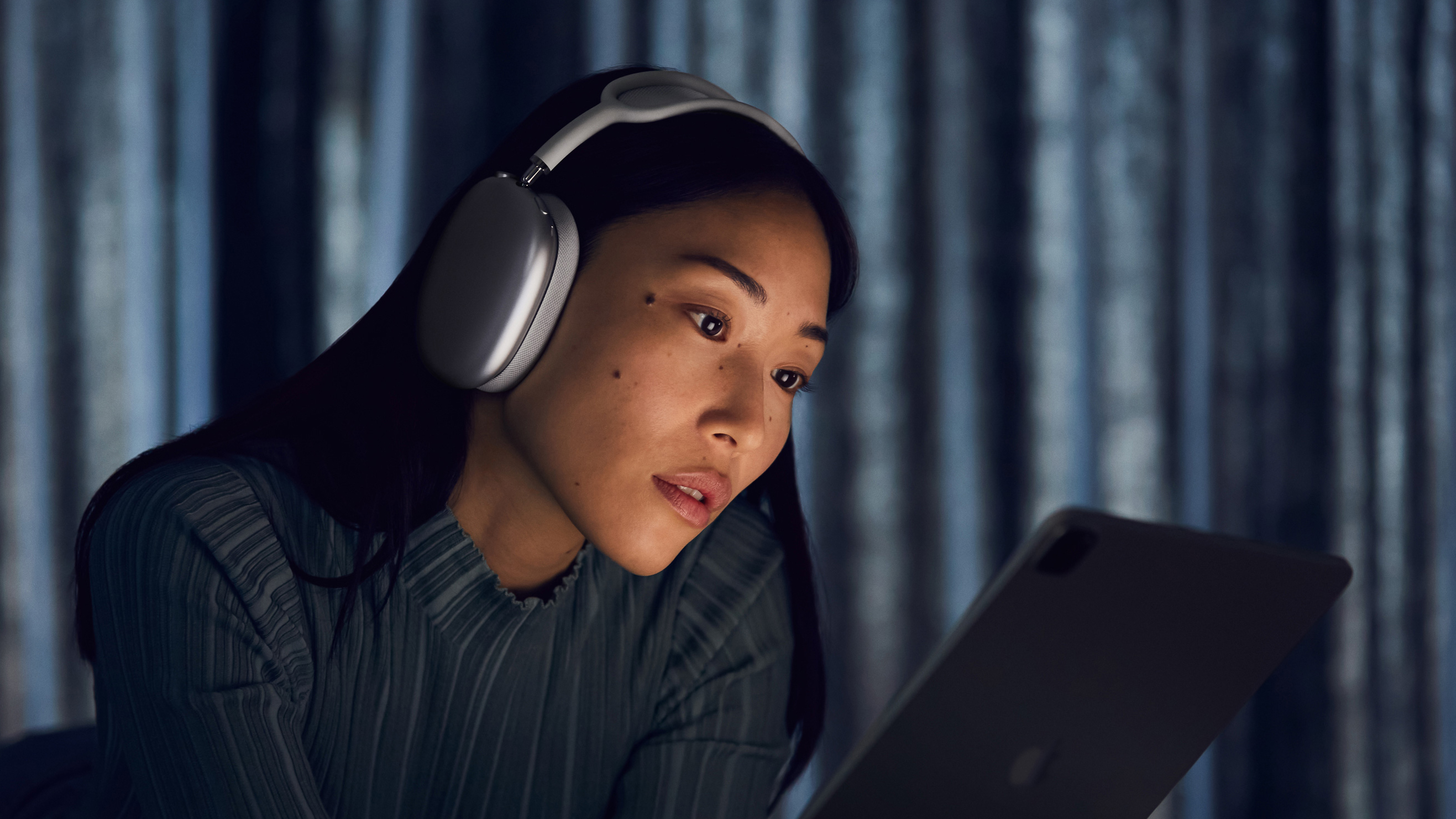I tried iOS 15's 3D audio for AirPods, and it can be wonderful… if you change a hidden setting
iOS 15 has the ability to turn stereo audio into cool Spatial Audio, but it ended up driving me mad without knowing about key setting to change


Update: This article has been changed to reflect a settings change that can fix the issues discussed.
One of the coolest things Apple has introduced in the last year is its Spatial Audio technology, which is basically its way of adding 3D audio, including Dolby Atmos, to AirPods Pro and AirPods Max (and I would put money on it coming to AirPods 3 too).
It sounds fantastic with movies, and I tried it with Dolby Atmos music and came away as a convert. But there's actually a pretty limited selection of music in Dolby Atmos in the Apple Music library, so I was really excited when Apple announced that iOS 15 would bring a kind of Spatial Audio 'upscaling' for stereo sound, giving it the feel of tracks that were actually mastered for 3D audio.
It's called 'Spatialise Stereo', and I tried it as soon iOS 15 came out and my initial verdict was: I don't like it, and also it's ruined the music part I liked before, what the hell, Apple?
The problem wasn't the 3D effect, which is actually exactly what I was hoping for: the music is basically shifted away from feeling like it's being pumped from speakers that are right in your ears, and feels more like the sound is coming from the space around you.
Apple isn't trying to apply any ridiculous 3D whizzy effects to the sound, and it's right not to – it's just creating the feeling that the audio is being created by speakers in the space you're in, rather than from headphones. This is one of the most pleasant parts of the whole Spatial Audio thing for me – regular listening on the headphones feels a bit claustrophobic, in comparison.
No, the problem was how the 3D is calibrated. You see, when you watch a video with a Dolby soundtrack on your phone and Spatial Audio kicks in, the system does something clever: it orients the 3D sound to the phone. It recreates a home theatre system, where the TV would have a centre channel beneath it, then you'd have left and right channels, and rear channels, and height. And if you turn your head to the left, the sound acts as if you'd done that in a real speaker system, with the centre channel audio now coming from your right. I love this for video – it makes total sense.
Get all the latest news, reviews, deals and buying guides on gorgeous tech, home and active products from the T3 experts
And sensibly, that isn't how it worked for Dolby Atmos music in iOS 14. That didn't orient to the positioning of your phone, but instead created a kind of 3D bubble of sound that just moved with your head the way that all music does when it's coming from headphones.

Judging by this woman's impression, she's just installed iOS 15 and is wondering why her music sometimes comes from just one ear now.
Why, iOS 15? Why?
But iOS 15 changes that by default. Not only does the 'Spatialise Stereo' feature to upscale stereo to 3D work by orienting to the phone's position, but now so does all Dolby Atmos music! Why would I want my music's direction connected to the phone? They have absolutely nothing to do with each other.
If you have your phone in your pocket or bag or whatever, the system is sensible enough to recognise this and not make the music come from behind you, but it still doesn't turn off the directional audio totally. Instead, if your head is facing a particular direction for a few seconds consistently, it makes that the new central position.
Picture it: you're walking along the road, looking left and right, the music shifting around you all the time. Whenever you turn a corner, the music is stuck in one ear for a few seconds, before pulling back to the centre.
I was listening to podcast while out, and it sounded like I was walking along with two friends who kept stepping around me while talking, left and right, back and front, in the kind of way that would get a real person slapped.
And then when you stop moving and you get your phone out, suddenly the music is shifting again, because it wants to reorient to that. Infuriating.
Mercifully, there's a setting to disable this head tracking for audio-only playback, but to leave it on for video. The problem is that you might never stumble on this setting by accident – I went looking in both the Music app settings and the settings for my AirPods Pro and Max, and found nothing.
Mercifully, reader @ReissOmari contact me via Twitter and pointed out that you can find the ability to customise the head tracking in Settings > Accessibility > AirPods.
I'm so glad to have this setting, because while I was infuriated by the head tracking for music, I actually loved it for video that's having the the 3D effect added. When the trailer for The Tragedy of MacBeth dropped, the first place I saw it was on Twitter. Spatialise Stereo added way more cinematic thrust to it than I'd normally get from watching a trailer compressed to within an inch of its existence by social media servers. So I loved it in that moment, and now I'll still enjoy it for similar stuff.
Give me more control
I think it might still be better if Spatialise Stereo wasn't a global setting that's either on or off, with multiple taps required to change it.
What I'd like to see is a specific menu for it in the Settings app, with the ability to enable Spatialise Stereo on a per-app basis – if you're listening to something and the app is the source, even if it's doing it in the background, you can have Spatialise Stereo off or on as per your preference.
And then second, each app should have the option to have head tracking on or off. These two options would solve all my gripes, though I'm actually pretty happy with it as is, now that I know about the head tracking control in the Accessibility menu.

Matt is T3's former AV and Smart Home Editor (UK), master of all things audiovisual, overseeing our TV, speakers and headphones coverage. He also covered smart home products and large appliances, as well as our toys and games articles. He's can explain both what Dolby Vision IQ is and why the Lego you're building doesn't fit together the way the instructions say, so is truly invaluable. Matt has worked for tech publications for over 10 years, in print and online, including running T3's print magazine and launching its most recent redesign. He's also contributed to a huge number of tech and gaming titles over the years. Say hello if you see him roaming the halls at CES, IFA or Toy Fair. Matt now works for our sister title TechRadar.